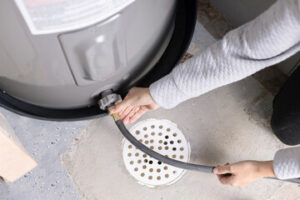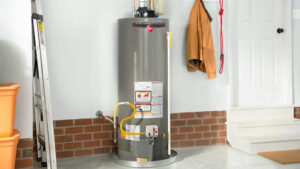If you’re looking for ways to grow your roofing business, try a referral program. Reward professionals such as home inspectors and real estate agents who send clients your way by offering them discounts, bonuses, or commission.

The job responsibilities section is an important part of a roofer’s job description, as it helps attract suitable candidates while deterring unqualified jobseekers. Contact Roofing Services Kalispell Montana now!
A roofing service can install new roofs in residential and commercial buildings. They can also install insulation and other components to improve the energy efficiency of a building. They can help you choose the right type of materials for your roof, taking into account the climate and age of the building. This will ensure that your roof is durable and weather-resistant. It will also enhance the appearance of your home and add to its curb appeal.
Roofers can also inspect and repair existing roofs. They can replace worn out shingles and flashing, and can seal leaky joints and cracks with caulking. They can also install gutter systems and solar panels. In addition, they can perform chimney services and repairs and install skylights. They can even make minor adjustments to the interior of your house, such as moving light fixtures and vents.
In some cases, roofers may collaborate with other construction professionals on large projects. They can provide project assessments, coordinate schedules and work with teams to complete roofing tasks in a timely manner. They also have customer service skills, as they interact with clients to discuss their options and answer questions.
When you’re choosing a roofing contractor, ask about their experience and qualifications. Look for a company that has been in business for at least five years and has a good reputation in the community. Also, ask about their insurance coverage and whether it’s up to date. Ideally, the roofing company should have both general liability and workers’ compensation insurance.
If you’re planning to sell your house, a well-maintained roof can increase its value. It can also help prevent serious structural damage and maintain a safe living environment for you and your family. Roofing services can also install a range of other improvements to your property, such as siding and window installations. They can also install ice melt systems and other features to make your home more comfortable and energy efficient. They can even add decorative elements to enhance your home’s curb appeal. They can also help you choose the best materials for your roof and advise you on how to maintain it.
Repair
A well-maintained roof is a shield that protects everything and everyone inside your house. If the shield is damaged, it’s time to call a roofing contractor for repairs. If the damage is serious, the roofing company may also install new shingles. They will also clean up the debris and dispose of it properly.
Most roof repair is done to re-seal areas where water might leak through. They will replace damaged flashing, patch cracks and replace or repair vent boots. They will also re-caulk around chimneys, skylights and other features. Surface repairs are also common, including replacing cracked or missing shingles and filling in small holes.
To do a proper job of roof repair, they will have to remove some shingles to get at the area that needs attention. They will then use a caulking gun to apply new sealant to the areas that need it. This will ensure that the roof is watertight and that no more leaks can occur.
The roofing contractors will be careful not to disturb the underlying sheathing, and they will not put too much pressure on the existing shingles. They will work quickly to minimize the amount of moisture that gets into your home.
When you have a leaking roof, it’s important to act fast. Waiting too long could lead to mold, mildew and structural damage in your home. It’s also possible that you will have to pay a higher insurance premium as a result of water damage.
Whether you are doing a diy roof repair or having the professionals do it, the best time to do it is during off-peak seasons. This will allow you to take advantage of lower pricing and more flexible contractor availability. It will also give you the best chance of having the job completed before bad weather hits.
If you are doing a diy roof repair, make sure that you have all the necessary tools before you start. The most important tool is a ladder, and you should always be working with an assistant. You will also need a good set of hand tools, such as a pry bar, shears and a nail puller. A good pair of rubber gloves will help you avoid slipping and cutting yourself.
Maintenance
Roofing maintenance can help avoid major problems in the future. A roof can be damaged by many factors, such as high winds, hail, or debris, and it is important to have a regular inspection to detect problems early. A professional roofing contractor will know what to look for and can repair any issues quickly. They can also offer preventative services to keep your roof in good condition for longer.
During maintenance visits, your roofer will inspect the entire roof structure for any damage or wear. They will clear all roof drains and gutters, and inspect for sagging or damage to roof trusses or supports. They will re-flash splits in field and wall flashing, and replace any loose gutters and leaders. They will also check and clean roof surfaces and attic vents. Chimneys, solar panels and skylights are areas that can cause leaks and should be examined for sealant failure or deterioration.
In addition to a roof inspection, your roofing contractor will make sure that all the attic insulation is in place and in good condition. Insufficient attic insulation can lead to Ice Dams in the winter and excessive heat in the summer. Your inspector should always go into the attic to check the insulation and should not hesitate to recommend additional insulation if necessary.
Your roofing contractor will provide you with a report after each maintenance visit and a list of recommended repairs. This will allow you to monitor the progress of your roof replacement project and plan accordingly. They will also notify you of any manufacture roof warranty requirements.
A good roofing contractor will have a roster of people that will be performing the maintenance and can run background checks on them. This will ensure that your building’s employees are safe on the property and that they are all trained in the type of repair that your building requires. All maintenance crew vehicles will be equipped to handle a variety of different repair types and will be briefed each morning on the buildings needs and systems that they will be working at.
Insulation
The proper amount of attic insulation in your home can dramatically lower your energy costs throughout the year as well as protect roof shingles from damage during harsh Albany, NY winters. Our experienced team of residential home energy professionals will perform a no-cost energy assessment of your home to identify areas that require insulation services and provide service advice, as well as a price quote.
Choosing a reputable roofing contractor to perform your roof repair or replacement is one of the most important decisions you can make for your family’s safety and comfort. A good roofing contractor should have a solid history of safe and quality work, and be licensed and insured to perform the services they offer. Homeowners should always demand written estimates from a roofing company before they sign any contracts or give payment.
There are many different resources available to help prevent falls in the roofing industry including fall prevention plans,[23] a ladder safety mobile application,[24] infographics and tipsheets,[25] toolbox talks,[26] videos and webinars,[27] and safety leadership training.[28] Multi-layered approaches to fall prevention and protection that employ the hierarchy of controls are preferred over single or isolated control measures.
When selecting a roofing company, it is also important to make sure that they follow your city’s codes and permits for roofing work. Shady contractors often do not and will charge your insurance company for things that you do not need or did not ask for simply to maximize your insurance claim and take advantage of vulnerable homeowners.

